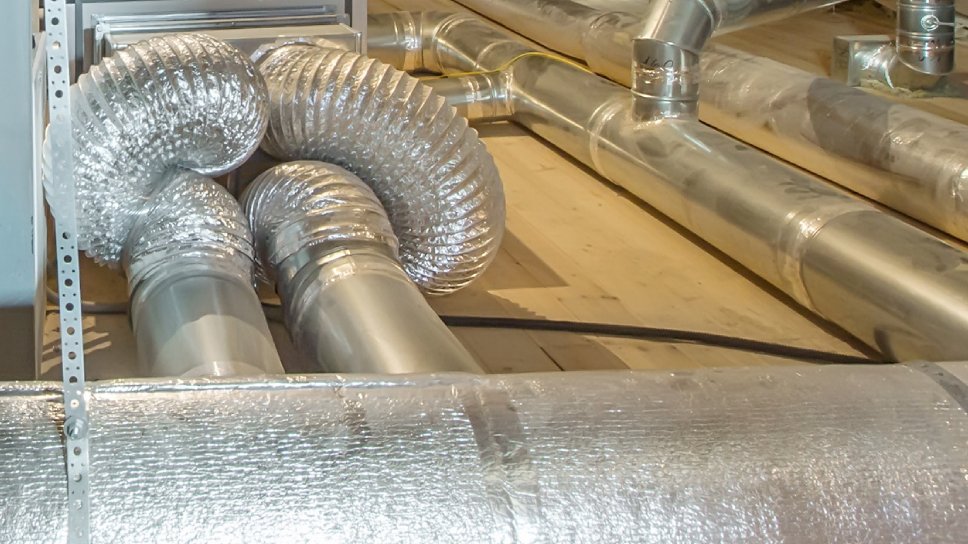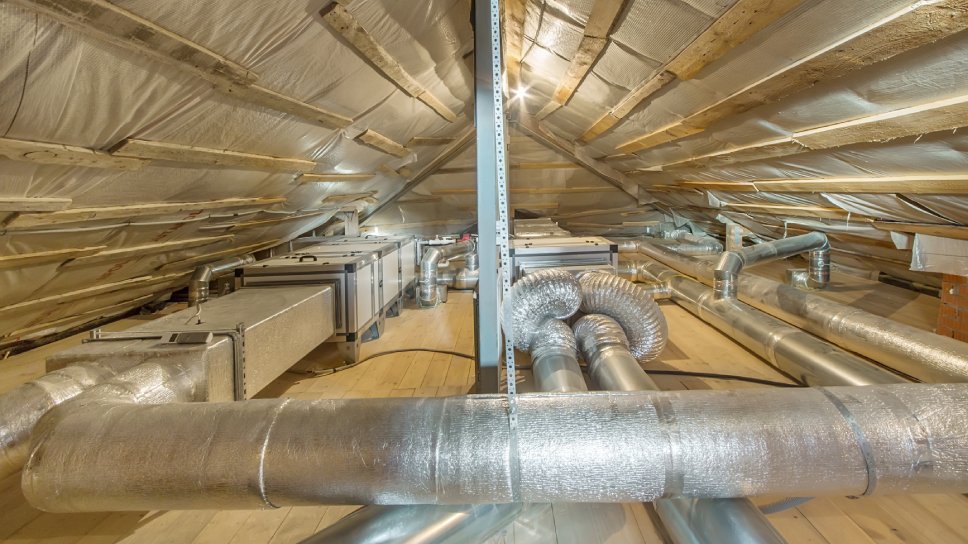Thermal energy
Heat loss is a key factor that determines the necessity to insulate ventilation systems in commercial buildings. Good insulation of ventilation ducts allows for higher efficiency of the entire system, generating significant savings. This is dictated primarily by the necessity to continuously increase the insulation of partitions, as well as the obligation to economically manage thermal energy. Therefore in order to achieve the appropriate thermal efficiency of the building, the insulation of ventilation pipes in the attic is becoming a necessity rather than an option.

Legal requirements for the application of ventilation ducts insulation
The conditions according to which the thermal insulation of ventilation ducts should be used are set out in the Regulation of the Minister of Infrastructure "on technical conditions to be met by buildings and their locations". (Journal of Laws 08.201.1238). According to the content of the Regulation, if the ventilation installation is located in unheated rooms or is susceptible to heat loss in any other way, then it is necessary to protect it with proper insulation which additionally does not spread fire.
According to Chapter 6 of the Regulation, §147. 1: "Ventilation and air conditioning should ensure appropriate quality of the internal environment, including the volume of air exchange, its cleanliness, temperature, relative humidity, speed of movement in the room, while maintaining separate regulations and the requirements of the Polish Standards for ventilation, as well as fire safety conditions and acoustic requirements specified in the Regulation". In turn, § 267. 1. stipulates that: "Ventilation ducts should be made of non-combustible materials, and combustible thermal and acoustic insulation and other combustible lining of ventilation ducts may be used only on the external surface of the ducts in such a way as to ensure prevention against the spread of fire."
Insulating material and its thickness in case of ventilation ducts insulation
The thickness of the layer, which the insulation of ventilation ducts should have, is of essential importance. It is usually selected individually, similarly to the assessment of the installation's working conditions, without additional regulations imposed by the Polish law in this respect. The key issue here is the location of the installation ducts. And so an unheated area requires a thicker insulation than, for example, a space in a suspended ceiling. The thickness of the insulation layer is also affected by the air circulation in the close vicinity of the ventilation duct. In this case, even slight air movement requires thicker thermal protection.
To maintain full fire protection, the ventilation duct insulation should be made of non-flammable materials with a low thermal conductivity coefficient. They should also be characterised by high resistance to external factors, especially to water. A commonly used insulation material for ventilation ducts is, among others, lamella mat, polyethylene or rubber mat. Polyurethane foam, mineral wool ventilation panels or fibreglass lining are also increasingly used.
When providing insulation, it is very important to correctly determine the circumference of the insulated duct, and to be as precise and careful as possible when laying the insulation. It is also important to ensure that the insulation joints are finished with sealing tape, and the largest ducts are reinforced with additional pins or clamps. In order to obtain appropriate acoustic soundproofing of the ventilation installation, PUR foam or a special muffler is used more and more frequently, which is assembled on the internal surface of the ventilation duct.

 This website uses cookies. By using this website, you consent to the use of cookies in accordance with your browser settings.
This website uses cookies. By using this website, you consent to the use of cookies in accordance with your browser settings.